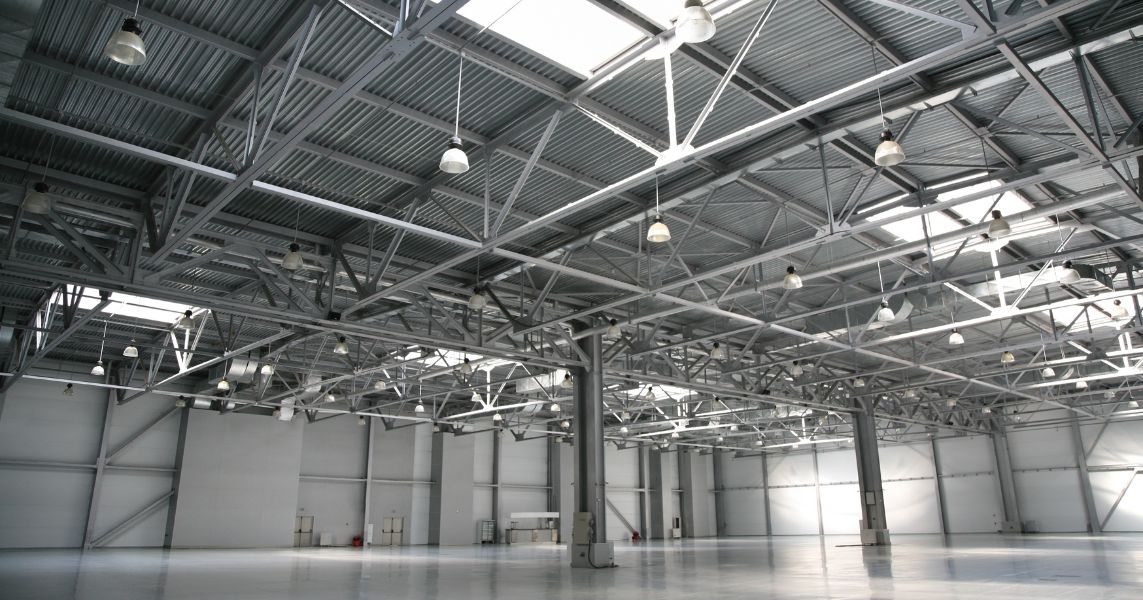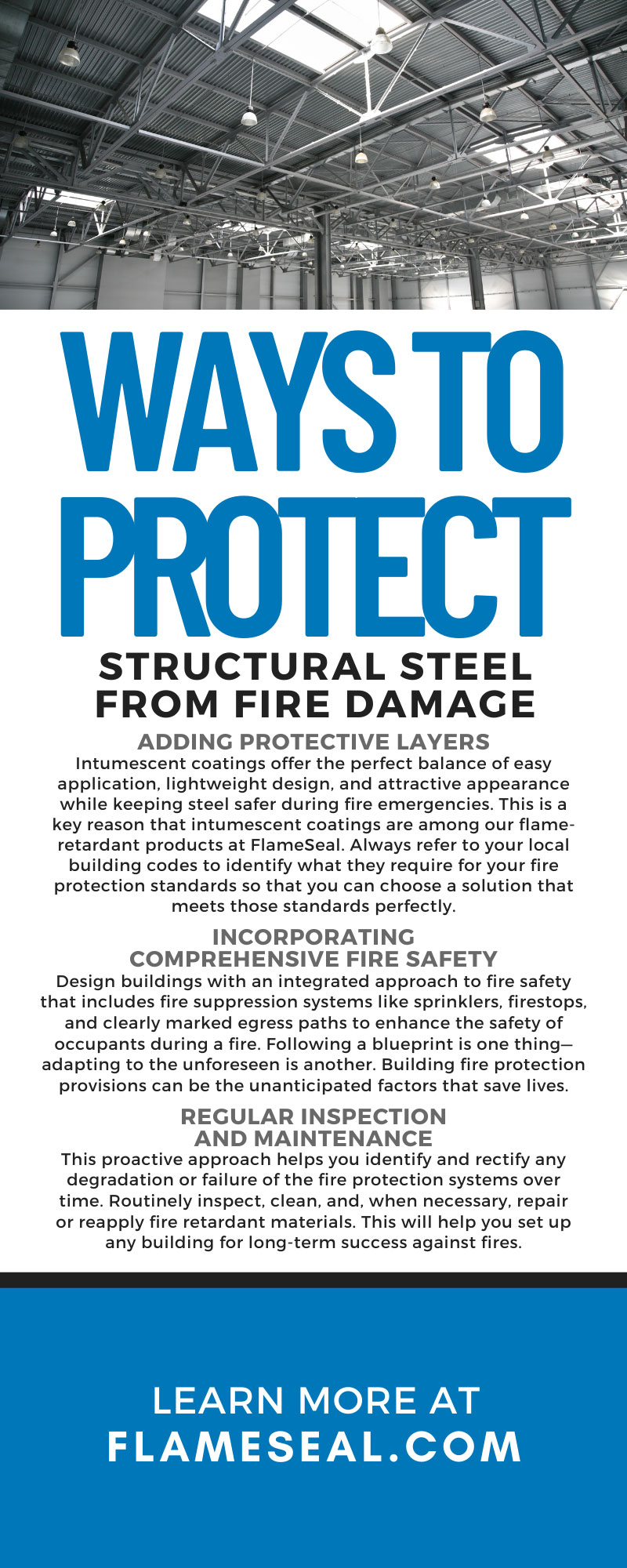
The thought of structural steel succumbing to the intense pressure and heat of a fire is enough to worry any architect, contractor, or conscious builder. It’s not just a matter of building codes; it’s about safeguarding the integrity of structures and, most crucially, the lives and valuables sheltered within them. As harrowing as such a scenario sounds, the field of fire protection is as dynamic and as luminous as the flames it combats. Assess the best ways to protect structural steel from fire damage so that you can protect the buildings you create.
Understanding Fire Risks for Structural Steel
Before diving into the protection methods, you must understand the vulnerabilities of steel in the presence of heat and flames. It’s easy to overlook methods for protecting steel against fire because it’s such a strong material.
Structural steel, despite its durability and stiffness, is susceptible to the intense heat generated by fires. This vulnerability is due to steel’s inability to maintain its structural integrity under extreme temperatures. Unlike materials such as timber, which burn visibly, steel can appear unchanged yet be significantly weakened, leading to a potential structural collapse.
The impact of fire on steel extends beyond immediate damage. The high temperatures can cause permanent deformations, introducing residual stresses and reducing its ability to bear loads. This can compromise the building’s structural soundness long after someone extinguishes the fire, presenting hidden dangers.
Steel Protection Methods
You can protect structural steel in a wide range of ways, and they go beyond applying materials directly to the steel. Now that you know what makes steel so vulnerable, you can identify the best way to protect such materials in your buildings. Here are the best ways you can protect steel from fire damage.
Method 1: Adding Protective Layers
The best way to start protecting steel components is by using the right coverings. One of the most common and effective methods today is applying intumescent coatings. These cutting-edge applications repel the initial onslaught of heat and flames and maintain their protective integrity longer, offering potential lifelines should the worst come to pass. The longer the structure can remain intact during fires, the easier it will be for occupants to escape and for fire responders to enter.
As heat and flames interact with these coatings, the intumescent materials expand to protect the steel beneath them for a certain duration. That duration will vary depending on the rating of the coating. Some coatings can withstand heat and flames for multiple hours, but not all of them will, so choose an option that suits your building’s needs accurately.
Some builders also rely on rigid boards rated for fire protection. These boards maximize fire protection and acoustic quality, but they lack the aesthetic advantages of intumescent coatings. Less popular methods include covering the steel in concrete and installing a protective blanket, which are more complicated and result in a less attractive structure.
Intumescent coatings offer the perfect balance of easy application, lightweight design, and attractive appearance while keeping steel safer during fire emergencies. This is a key reason that intumescent coatings are among our flame-retardant products at FlameSeal. Always refer to your local building codes to identify what they require for your fire protection standards so that you can choose a solution that meets those standards perfectly.
Method 2: Incorporating Comprehensive Fire Safety
You have to apply materials like intumescent paints or concrete directly to steel, but protecting steel requires making the whole building safer. Intumescent paintings can be part of a fireproofing solution that slows the rate of smoke and flame production, but that doesn’t mean they are entirely fireproof. Thus, a comprehensive fire safety approach is key.
Design buildings with an integrated approach to fire safety that includes fire suppression systems like sprinklers, firestops, and clearly marked egress paths to enhance the safety of occupants during a fire. Following a blueprint is one thing—adapting to the unforeseen is another. Building fire protection provisions can be the unanticipated factors that save lives.
Slowing down the spread of flames in every room of the building makes it easier to prevent those hazards from reaching structural components.
Method 3: Regular Inspection and Maintenance
Like any addition to your building, you shouldn’t leave materials specifically installed to enhance fire protection unchecked. Ensuring the longevity and effectiveness of fireproofing measures requires regular inspections and maintenance.
This proactive approach helps you identify and rectify any degradation or failure of the fire protection systems over time. Routinely inspect, clean, and, when necessary, repair or reapply fire retardant materials. This will help you set up any building for long-term success against fires. This principle applies to intumescent coatings, sprinklers, and any other tool in your fire safety strategy.
Method 4: Training and Awareness for Professionals
Materials used to maximize fire safety should be in the hands of professionals who know how to use them. Use the right applicators for intumescent coatings and other protective materials, and provide specialized training to builders when necessary.
That way, you can ensure that every building you construct meets the most stringent fire safety standards. The success of fire protection strategies heavily relies on the knowledge and readiness of building professionals—ranging from architects to emergency responders. Continuous training and awareness programs are critical for keeping these individuals prepared to handle and mitigate fire incidents.
The field of fire protection is continually evolving, driven by technological innovation and changes in building standards. Construction professionals should engage in ongoing education to stay up-to-date on the latest advancements and techniques in fire safety.
Optimizing Fire Safety Today
Success in fire safety endeavors often pivots on the actions of individuals—inspectors, technicians, responders—who must be properly trained, vigilant, and ready to engage with these sophisticated systems. In the constantly shifting landscape of construction and fire safety, contractors, architects, and builders must stay ahead of the curve, adopting a view that sees not just the structure but what may threaten it.
Fire protection, then, becomes an artful integration of engineering and empathy. The path forward is clear; it’s one of collaboration, innovation, and unwavering dedication to fire safety excellence. Use the methods above so that you can build structures that create a safe, responsible environment for the occupants inside.

